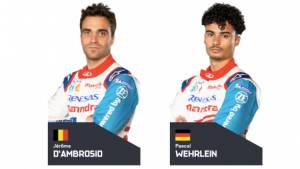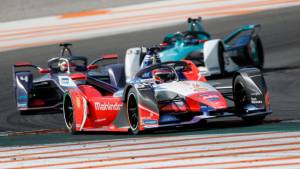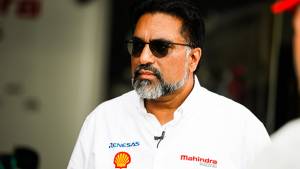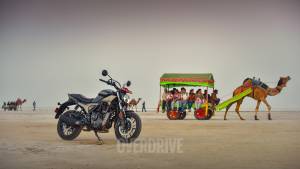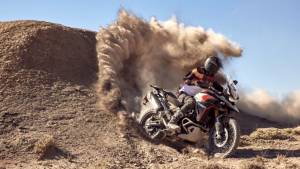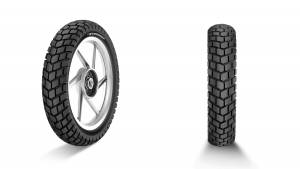In conversation: Mufaddal Choonia, Team Principal, Mahindra Racing
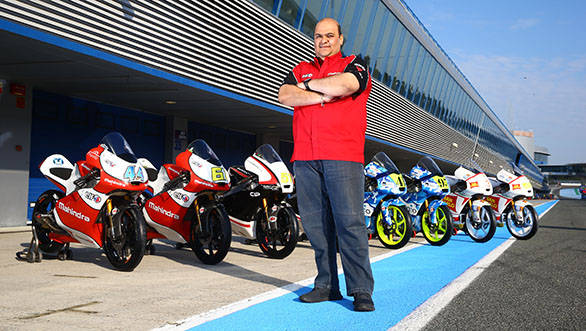 Mufaddal Choonia with the eight Mahindra motorcycles that form part of the 2014 MotoGP grid
Mufaddal Choonia with the eight Mahindra motorcycles that form part of the 2014 MotoGP grid
Mahindra Racing is now in its fourth season of international racing. Since the time the team started out back in 2011, the progress they have made has been steady although not remarkable. One pole position, one podium finish and a whole lot of positivity seem to fuel the fledgling outfit's desire to get better in the cutthroat world of grand prix motorcycle racing. We caught up with the team's principal Mufaddal Choonia to find out how much progress the team has made so far, and how much further they have to go.
OD: Mahindra Racing has come a long way since 2011. Can you talk us through this journey?
MC: We started from zero. It's (the progress) been quite a lot. In 2011, we didn't have any experience to fall back on. Nobody in India knew anything about racing. We had to establish a base, learn everything about running a team, developing motorcycles, running a successful construction factory,. Every year it adds on. The first year was about trying to find our feet. The second year was to learn how to develop a bike. 2013, last season, we got our product together, and got it right. We established a complete development program. We've gone a step ahead in 2014 by providing our Mahindra MGP30 to other customers. We've not just serviced our team, but also other customer teams. So we've gone ahead in terms of being true full scale manufacturers.
OD: One of the major changes has been the switch from Engines Engineering as your technical partner to Suter Racing.
MC: Engines Engineering was part of our group in 2011. So naturally, being an in house group, we partnered with them. Due to certain reasons, Alberto bought his stake back from us and he separated with another company and is not part of the group anymore. So we started looking for other options. We had to make this transition quick because firstly, the class was changing. The category had changed from 2-stroke to 4-stroke. Also, we had to then look out for a technical partner that was at a higher level than Engines Engineering. We were of the opinion that we wished to work with the best, because we are in a series which is the best in the world. We also learned with the past season's experience. There was Oral Engineering that was working on the engines, Engines Engineering was working on the rest of the bike, and Mahindra was helping them both in this. We wished to go a step ahead, as we wanted Mahindra's involvement to increase. This three-pronged approach proved slightly challenging. The integration of the vehicle, the chassis along with the engine. The lesser the parties, the better. It's better working with one partner, than with two, to develop one vehicle. We were looking for a partner that was capable of developing the engine and the frame, and also had to be one of the best. So it was almost like looking for a needle in a haystack! But we managed to go through with it. Found that Suter company had a brilliant record We dug into their past and found out that they had done some great engine work for Kawasaki and had very good in-house engine development capability. We decided to partner with them, so yes, the speed of the transition was a challenge. We decided to make the transition in August, and the testing takes place in January and February, i.e.winter. So we had to develop an entire bike by latest mid-January. This was really tough. Our competitors had already begun testing their bikes by then. But I believe it works out if everyone is focused and moves in the same direction and both partners had great passion. 2012 had proved to be very challenging, which made us hungry to prove ourselves and put forth a great project. I must compliment the entire team for their dedicated efforts
OD: Could you expand on your partnership with Suter. What does Suter do and what does Mahindra do?
MC: It is a partnership in the true sense. There is a lot of involvement with Mahindra Engineering Services. The entire project management is done by Mahindra. We manage the time, budget, etc. The racing know-hows come from Suter. Mahindra knows how to make an engine, but Suter knows how to make a racing engine. A lot of core R&D work has been done by Mahindra itself - a lot of simulations, failure mode effect analysis (FMEA), validation of parts through computer programming, simulating various conditions while designing a new chassis, for failures, rigidity, flex, etc. We have a strong R&D, and hence we managed to turn the project around very quickly. So while Suter was giving us racing inputs in terms of the core design, the analytical work was being done by Mahindra Engineering services. So when the first bike was ready, a lot of validation was already done and we didn't have to spend much time on it. However, we did do a lot of track testing too. We spent a lot of time on the dyno for the engine and on the rolling dyno for the chassis. So a lot of engine validation and performance validation had happened. So yes, I would say that it has been a true collaboration
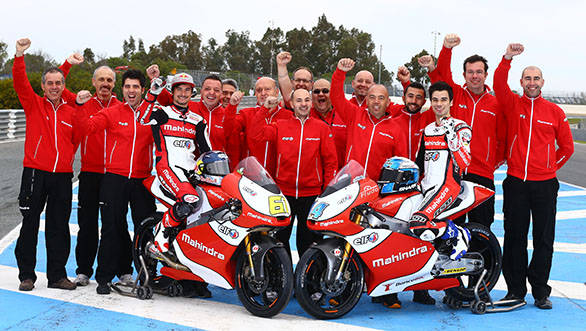 Arthur Sissis (left) still has some proving to do, while Miguel Oliveira has proved to be the rider Mahindra Racing is banking their hopes on
Arthur Sissis (left) still has some proving to do, while Miguel Oliveira has proved to be the rider Mahindra Racing is banking their hopes on
OD: And now you're supplying motorcycles to customer teams.
MC: Yes. As per the FIM regulations for the Moto3 class, every manufacturer should be able to supply engines to at least 15 riders. And we were approached by the teams somewhere in the middle of last season when they saw the bikes were performing well. They showed an interest in using the MGP30. It was a moment of pride for us because no Indian manufacturer has supplied racing motorcycles to foreign teams at this level. These machines are not production-based racers. They are actually made only for racing.
OD: And now you have a team in the FIM CEV Repsol International Championship in Spain.
MC: Yes, well they're more of a satellite team of Mahindra Racing. It's a private team, but the entire technical expertise and supplies like the bike and the parts, etc, all come from Mahindra and the team operations are carried out by the TMR team. It's something in the middle of a factory team and a satellite team.
OD: How does this help your Moto3 operation?
MC: We use a lot of information gathered from that team in the development process. As it is one more avenue available to us to test the bike in true racing conditions. So you may do as much testing as you want on the bench, or on the track, but there is nothing which beats so called testing or validation you get under racing conditions. This team participates in the Spanish championship, so we actually get race feedback from them. We have our engineers that are present for some of the races, we share a lot of data with them that we get from our Moto3 Team, helping them set up the bike, ensure that they get optimum performance from the chassis, engine mapping etc.
OD: Do you decide who rides for Mahindra Racing? Or does Suter take a call on that?
MC: Yes, it is entirely Mahindra Racing's decision. As far as riders are concerned, we obviously do bank on Suter's knowledge and experience. They've been in the field much longer than we have. But eventually it is Mahindra Racing's decision. The process we follow is very simple, we shortlist a few riders every year depending on their performance, and then it's the conversation between the rider and the team.
OD: Have riders in the past been given tests ahead of signing them?
MC: Well, if a rider wants to test the bike, there is always an opportunity. He has to be comfortable on the bike; he has to like the bike. However, these are experienced riders. They've seen how well the Mahindra bike behaves on the circuit, so nobody wants to really test them on track conditions. But last year we did do something for Arthur Sissis, not in terms of a track test, but he did want to sit on the bike, see the ergonomics, etc.
OD: Speaking of whom, Arthur has proved to be something of an unknown quantity.
MC: Yes, Arthur is still a bit of an unknown quantity. He still has to develop the potential he has. He's been terribly unlucky. In Qatar he didn't race because of tonsillitis, in America, he was taken down by another rider, in Argentina he did fight, but he lost tyre grip towards the end of the races. But I feel his best is yet to come. We have a lot of programmes for riders to help them develop throughout the season, guidance from experienced riders, who've been riding in the past, who coach them, etc. So by the end of it he should improve.
OD: Miguel Oliveira has proved to be the rider who have your hopes set on then?
MC: Of course. Miguel is probably one of the best riders on all the Mahindras today. We have eight Mahindra bikes on the grid, but at the moment he is the fastest and a lot of our hopes depend on him in terms of giving us the results we wish for. However, I'm very confident about the other riders too. They have really improved. And you see young guys who are in their first season. For example Bryan Schouten has already started hitting the top 20. Alessandro Tonucci is also someone to watch out for However I feel that the guy who is really close to Miguel is Brad Binder. He's been doing very well, and is consistently in the points. We are the constructors, and our job is to ensure that all of the eight riders are in the front as much as possible. We also have a track support team in the circuits that provide guidance and technical support for the riders.
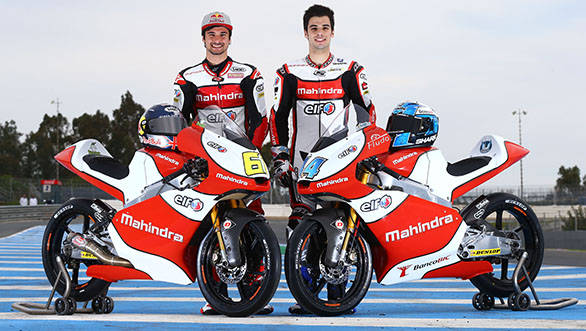 Mahindra Racing's only podium came thanks to Miguel Oliveira (right) who finished third in Malaysia in 2013
Mahindra Racing's only podium came thanks to Miguel Oliveira (right) who finished third in Malaysia in 2013
OD: Tell us more about the rider coaching programme that you have.
MC: I can't tell you a lot about it. But what I can tell you is that we have ex-riders in mind who have been ranked very high when they were racing. Therefore they know the circuits very well and how to win races. When talking about time differences, 0.2, 0.3 seconds is virtually nothing. I cannot take names at the moment, but there are riders who we are in dialogue with who will be a part of this programme. There won't be a major announcement about this though.
OD: How much of Mahindra Racing's know how trickles down to your two-wheeler business?
MC: I think we would be wasting a huge opportunity if we don't utilize this program to feed our two wheeler business in any way. But Mahindra 2Wheelers has been working closely with Mahindra Racing. There are people from the factory who spend time at Mahindra Racing, and they visit the races, etc. There has been sharing of ideas, but how will these ideas be incorporated into the product development programme with Mahindra 2Wheelers, I cannot share with you at the moment.
OD: What about making a transition to the other classes?
MC: Moto2 is a slightly strange class. The learning is limited. The MotoGP class is something we haven't thought about much. You need very different know-hows to be a part of that class. We have just started. We don't want to spread our eggs in too many baskets. We want to establish ourselves and make a success out of our Moto3 programme. We've only been on the podium once. There are still a lot of steps ahead of us, like getting on the podium on a regular basis, winning races consistently, etc. So at the moment we wish to make this venture a success.
OD: But you haven't had an easy start to the 2014 season.
MC: We've been slightly unlucky. At Qatar we were almost on the podium. America: Miguel and Arthur got taken out by the same rider, though Miguel made it into the points. Argentina: we had a technical issue, Miguel had an arm-pump problem. But hopefully our luck will change soon.
OD: You've said you're struggling with pace in corners.
MC: No, we're not struggling. What we're working on currently is to improve the acceleration at the low end. But this is not a mechanical issue and does not speak on the incapability of the engine. The issue is mapping. The only thing you can do about mapping is by refining the time the engine spends on the dyno and the amount of time it spends on the tracks. This is very regular. You have to keep refining your setup and bike, and keep improving it throughout the year. That's what racing is all about.
OD: Could you tell us about your development programme through the season?
MC: We have an improvement programme in place throughout the season. Engine development is not allowed this year, that's the regulation. So you can only do everything that goes around it. So we have developments planned and some of them will also go into the 2015 bike. So this is where our CEV involvement is important, because it is almost like an open class, there are no restrictions whatsoever apart from those on the engine rpm. You can have as many engine and chassis variants as possible. We have developed a lot of kits that we are testing. We have a new engine with a new cylinder head that we will be testing, plus other improvements as the season moves forward.
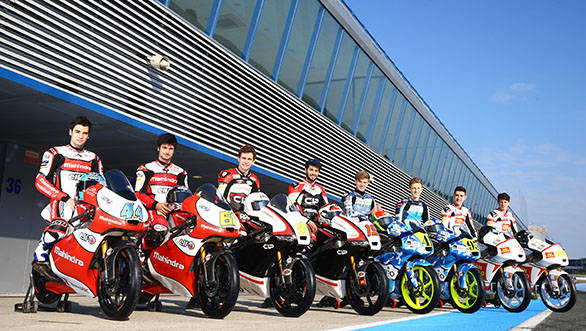 The team aims to have all their riders - factory or customer - at the front end of the grid
The team aims to have all their riders - factory or customer - at the front end of the grid
OD: And how much work has been finished on the 2015 motorcycle?
MC: The first prototype of the engine is ready. It is under dyno testing at the moment. It'll be a few months before we put it on the track. We have a few variants of the chassis already ready, which we are testing and we'll select one as the final variant. The associated assemblies around the engine, that is the throttle body, air box, fuel intake system, etc will have to be modified. We are constantly testing the aerodynamics.You cannot say you have the best package, because there are always ways to improve it. Wind tunnel testing happens almost every month, and has been improving.
OD: And what sort of testing programme do you have in place?
MC: Well, it'll be some time before the bike is assembled. We can't just test the engine on a different frame. So once the bike is ready, we'll see if we have a test rider for it. Normally what is done is the first time when you test it, you don't use your GP riders. You have test riders. A test rider is someone with a lot of experience. You don't need to be fast to break any records, but you need to be fast enough for the bike to give you feedback. It's very important for the rider to be able to give you feedback even when he's riding the bike. This rider is usually someone who has retired from racing, or someone who is not currently racing, etc.
OD: Who are your test riders?
MC: We don't have a full time test rider at the moment. We use different riders as and when we require.
OD: When will we see the MGP liveried motorcycles that were displayed at the Auto Expo go into production as a special edition?
MC: I'm not privy to their plans. There could be special editions in the future, as both the programmes are now working quite well together. However I'm not very sure.
OD: And what about branching into the Two-wheeler National Racing Championship?
MC: As I said before, we don't want to spread ourselves too thin. Perhaps in the future if we feel that getting into the national series in India would be beneficial to the business, then I'm sure the business will consider it. However at the moment there are no such plans.
